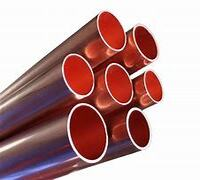1. Introduction
Just 24 hours ago, a major European data center operator announced a $500 million expansion project that mandates the use of solid copper earth rods across all new server farms—a move driven by rising concerns over lightning-induced downtime and equipment damage. This real-world decision highlights how niche applications of copper rod technology are becoming mission-critical in advanced infrastructure.

While many associate copper with plumbing or wiring, its role in electrical safety—specifically through earthing—is both specialized and indispensable. In this article, we’ll dive into how copper rod, copper bonded ground rod, and related components form the backbone of reliable grounding in high-stakes environments.
2. The Science Behind Copper in Earthing
Earthing (or grounding) safely channels fault currents and lightning strikes into the earth, protecting people and equipment. For this to work efficiently, the conductor must offer low electrical resistance and long-term durability.
Copper excels here. Pure copper rod—often called round bar copper or copper round bar—boasts exceptional conductivity and resists corrosion far better than alternatives like galvanized steel. That’s why you’ll see terms like earthing rod copper and ground rod copper used interchangeably in technical specs.
3. Copper Rod Types for Specialized Applications
Not all copper rods are created equal. Engineers choose based on environment, budget, and performance needs:
- Solid copper earth rod: Made from 99.9% pure copper, ideal for corrosive soils or coastal areas. Highest upfront cost but longest lifespan.
- Copper bonded earthing rod: A steel core electroplated with copper (typically 0.25mm thick). Offers strength of steel with copper’s conductivity. Also called copper bonded steel or copper clad steel earth rod.
- Copper clad ground rod: Similar to bonded versions but uses metallurgical bonding for better adhesion. Common in telecom and solar farms.

These variants directly impact earthing rod price, with solid copper costing 2–3× more than copper-bonded options—but often justified in critical infrastructure.
4. Beyond Rods: The Role of Copper Strip in Grounding Grids
In large facilities like substations or EV charging stations, a single rod isn’t enough. Engineers deploy meshed networks using flat copper strip or copper strip for earthing.
Popular sizes include the standard copper earth strip 25x3mm, prized for its balance of surface area and flexibility. Thin copper strips and 1mm copper strip are used in compact panels, while beryllium copper strip offers spring-like resilience in vibration-prone settings.
You’ll also find nickel plated copper strip in high-frequency grounding to reduce skin effect losses. And yes—copper strip price varies widely based on alloy, thickness, and whether it’s sold as a roll of copper strip or cut lengths.
5. Installation & Compatibility Considerations

Installing a copper earth rod isn’t just about driving it into the ground. Soil resistivity testing, rod depth (often 3m+), and bonding to above-ground systems using copper bus bar or flexible copper bar are crucial.
When connecting rods or strips, technicians often use copper brazing rod or copper to copper brazing rods for joints that won’t degrade over time. For repairs, copper welding rod or copper to copper welding rod ensures seamless conductivity—though true copper rod welding requires skill due to copper’s high thermal conductivity.
Avoid shortcuts like burning copper wire for scrap near grounding points—it compromises integrity and violates most electrical codes.
6. Cost vs. Performance: Making Smart Choices
Budget-conscious projects may lean toward copper bonded ground rod or copper clad steel ground rod, which offer 80–90% of pure copper’s performance at half the copper rod price.
However, in salt-laden air (offshore wind farms) or acidic soils (mining sites), solid copper rod or copper round bar is non-negotiable. Always compare total lifecycle cost—not just upfront earthing rod price.
For sourcing, phrases like ‘copper strip near me’ or ‘copper bars for sale’ yield local suppliers, but verify certifications—especially for copper ingot purity or copper alloy strip composition.
7. Conclusion
From data centers to solar microgrids, the humble copper rod has evolved into a high-precision tool for electrical safety. Whether you’re specifying a copper bonded earthing rod for a rural substation or integrating thin copper strips into a server rack’s grounding plane, understanding these niche applications ensures reliability where it matters most. As infrastructure demands grow, so does copper’s irreplaceable role beneath our feet—and inside our walls.
Our Website founded on October 17, 2012, is a high-tech enterprise committed to the research and development, production, processing, sales and technical services of ceramic relative materials such as Why. Our products includes but not limited to Boron Carbide Ceramic Products, Boron Nitride Ceramic Products, Silicon Carbide Ceramic Products, Silicon Nitride Ceramic Products, Zirconium Dioxide Ceramic Products, etc. If you are interested, please feel free to contact us.

